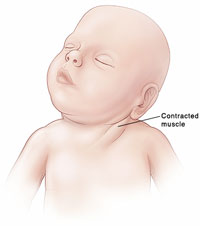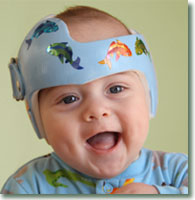Where to find plagiocephaly treatmentWhat is plagiocephaly?Plagiocephaly (pley-jee-oh-‘sef-uh-lee) is a term used to describe a malformation of the skull marked by an oblique slant to the head. More generally the term applies to any condition in which there is a misshapen skull including a flat spot on the back or side of the head. It is important to distinguish between an abnormal head shape caused by positional changes or deformation vs. an abnormal head shape caused by premature closure of the cranial sutures, known as craniosynostosis. An external force applied to the skull causes deformational or positional plagiocephaly. This external force can begin in utero and depends on the baby’s position. The external force can also occur after birth during infancy. In 1992, the American Academy of Pediatrics recommended that infants sleep in a supine position. The so-called “back to sleep” program is promoted to reduce the incidence of sudden infant death syndrome (SIDS). The incidence of SIDS has dramatically dropped since that time; however, the incidence of positional or deformational plagiocephaly has also dramatically increased during that same timeframe. When an infant is placed in the same position day and night, the head contacts the mattress in the same spot and there is an external force applied which could then create a flat spot. The infant will then prefer to rest the head on that flat spot thereby worsening the problem. Frequently there is torticollis present as well. Frequently there are plagiocephaly complications like torticollis present as well. Plagiocephaly treatment varies based on severity. |

What is torticollis?Torticollis [tohr-tih-‘call-iss] is a twisted neck in which the head is tipped to one side, while the chin is turned to the other. Torticollis results from a shortening or tightening of the muscles on one side of the neck. Often, there is muscle weakness on the other side of the neck. This causes a kink in the neck and the top of the head is tilted toward this tightened side. The chin will deviate toward the opposite side and infant will often prefer to look this way. This preferred gaze will often make the problem get worse. |
 Fig. 1. Infant helmet therapy Fig. 1. Infant helmet therapy
How is plagiocephaly treated?Early recognition of these conditions is important so that physical therapy and further prevention can be initiated. The most important component is parent education. We stress “tummy time” and neck range of motion exercises. This entails placement of the infant on the tummy as often as possible while awake. This will encourage the neck muscles to be strengthened and stretched out. This will also encourage the infant to turn the head. This will prevent further resting on the flat spot and further deformation of the skull. Typically when caught early, plagiocephaly treatment can simply consist of physical therapy and position changes. Occasionally an infant’s skull is significantly misshapen and does not respond to these conservative measures. In this case the child will benefit from evaluation in our comprehensive multidisciplinary Plagiocephaly Clinic at Children’s Minnesota to determine further plagiocephaly treatment options. At this evaluation, the head is carefully measured and compared to established normal measurements. Our Physical Therapist also conducts a formal and thorough evaluation of the neck range of motion and neck strength. We also have the availability to make a 3D-image of the head and determine the severity of the plagiocephaly. Some children have other abnormalities identified and benefit from 3D CT scanning to more fully evaluate the misshapen skull. If the condition is severe and not responding to physical therapy, then plagiocephaly helmet therapy can be quite helpful (Fig. 1). and is always discussed with the family when indicated. Surgical reconstruction of the skull is not usually necessary or indicated for simple straightforward positional or deformational plagiocephaly. |
How is torticollis treated?Torticollis usually responds favorably to physical therapy. Occasionally the condition is severe and the does not respond to physical therapy alone. In these instances a simple surgical release of the tightened muscle is helpful. This involves a brief surgery under general anesthesia in which a small incision is made low in the neck and the tight muscle band is released. The child typically would go home only a few hours after the procedure and recovery is rapid. For additional information or to schedule an appointment for your child’s torticollis evaluation of plagiocephaly treatment, please contact our office or the Craniofacial Clinic at Children’s Minnesota. |
This information is provided as a service to our patients. The information is for educational and informational purposes only and should NOT be used as a substitute for the advice of your child’s physician.